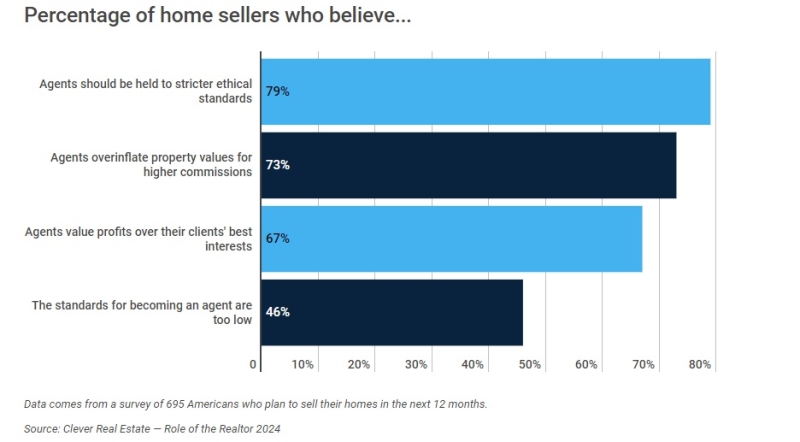Advertisement
Do-Not-Call regulations: Do-Not-Worry?
Home equity lending in the new marketplaceJeff Seymourmarketing tips, home equity products, promotion
Since 2001, lenders have enjoyed one big party. The combination
of record low interest rates and double-digit property appreciation
has tempted consumers with the prospect of low rate refinancing of
their first mortgages, and tapping into their home equity for home
improvements and settling high-interest credit card debts. After
all, with rates as low as 2.99 percent, why not?
Well, the party's over and some lenders area worried that the
hangover is about to hit them. As interest rates rise, refis will
dry up and consumer borrowing will slow down a bit (after all, we
are creatures of habit). This may seem bleak, but opportunity still
exists, especially in the home equity market. Historically,
consumers have used first mortgage loans as a way to reduce their
monthly payment obligation by rolling their higher rate, unsecured
debt into a first mortgage refinance transaction. By doing this,
the borrower would typically secure a lower interest rate and lower
monthly payments. Now, given what has happened in the past few
years, no one wants to refinance their mortgage from a rate in the
fives to a rate that could be creeping up into the mid- to high
sixes. Herein lies the real market opportunity for home equity
lenders.
So, how do you get the word out about your great home equity
product? Here are some suggestions that you may want to
consider:
1. Print Ads
Print advertisements can be a great way to spread the word about a
product. Print ads are nimble they have a quick turnaround time and
changes can be made very rapidly. Also, print ads are very cost
efficient when you consider the number of prospects who see it.
You'll have to make three big decisions when it comes to
advertising: What's your message, where do you advertise and when
do you run the ads?
First, if you're going to build your message around your rates,
make sure they are competitive. There's nothing worse than seeing
your ad next to another institution's ad that features a better
rate. If your rate is nothing to brag about, that doesn't mean you
can't advertise. Take another approach by building your message
around a competitive advantage, such as service. If your rates and
fees are equal to those of your competitors, emphasize excellent
customer service and quick delivery.
The second decision you have to make is about where to
advertise. Youre better off targeting papers within the area of
your branch's footprint, since this area will contain the people
who are more likely to respond to your ad.
Lastly, you need to decide when your ads will appear. In my
experience, weekends tend to be when more people are scanning the
newspaper for information about these products. I suggest
advertising one weekend every month during spring and summer (which
tend to be "home equity season"). The first day the ad runs, you'll
see a lift in application volume that will last six days. Then,
expect to see the requests for information drop back down to normal
range, which means it's time for the next ad to kick in. Managing
the peaks and valleys of application volumes will keep you on
speaking terms with your application processing managers.
2. Direct Mail
I'm a big fan of direct mail. It allows you to focus only on the
prospect you want to talk to. One of direct mail's biggest
strengths is that you can personalize it for different groups of
people, and decide which product you want to promote.
I suggest working with a credit-reporting agency to pick out
people with the credit profile you're looking for. You can specify
a minimum FICO score, the number of mortgage trades and/or the
aggregate balances of outstanding credit (the higher the balances,
the more likely they'll be looking for help with debt
consolidation). Don't worry about violating any privacy laws, you
are prospecting on the aggregate and will not get any personal
information on your prospects until they respond to your offer.
Some institutions only do direct mail with their own clients,
figuring the clients they already have a relationship with will be
more likely to respond. There's something to be said for this
approach, but it doesn't mean you can't get good business from true
prospects who haven't done business you. Remember that home equity
loans are a terrific door opener with true prospects. They allow
you to establish the relationship and then cross-sell them on other
products. To get the highest quality of respondents to your direct
mail, apply a response model to your list. Response models are
developed by credit reporting agencies. They predict the most
likely person to respond to your offer based on their past and
current credit behavior. Use the response model to cut the list at
the point where you feel that you can put out a profitable
mailing.
3. Marketing Through Your Branches
Based on what I've seen, if you have a great product to sell that
is priced appropriately, there's nothing better than getting it out
there through branch personnel. If you can make them into a
motivated sales force that's excited about your product, then you
have a winning combination. Remember, these are the experts in the
markets they serve and the "faces and voices" of your bank in that
community.
In today's market, selling is just as important as service. Many
banks hold their branch staff accountable for sales goals. Everyone
from tellers to branch mangers, to customer service reps has some
sales responsibilities. To make this work, branch personnel need
attractive and slick sales materials to work with. For management's
part, incentives are critical. Whether it's a per-unit commission
or a set goal for the whole branch, incentives give personnel the
push they need to overcome their reluctance to sell. Also, let the
staff get creative. I've been in branches where the staff has
really taken the initiative and come up with things like having
themed sales days. One day, branch personnel will dress up in home
improvement clothes to push home equity loans. In another branch,
the people working there decided to pass out newspapers at train
stations with home equity flyers. People really do get excited
about selling a product if you create hype around it through sales
promotion. When you look at the return on investment for every
marketing channel, nothing is better than an energized sales force
in your branch. This is not the "old school" bank with a branch
manger sitting in a back office with the doors shut. In the future,
successful banks will have energized, sales-oriented managers who
motivate staff to look at every service opportunity as a sales
opportunity. My branch was successful because as a branch manager,
I helped our customers when problems arose. When I was with each
customer, I would make sure that they knew that their problem was
now my problem. Once it was fixed, it would inevitably show up in
new sales because people were comfortable enough to allow me to
help them. Once you become the person they turn to when they have a
need, they feel comfortable listening to new ideas from you.
The bottom line is that home equity products are still alive and
well. It's just a matter of how you promote them. With a little
help from marketing, these can still be a good way to generate
sales, achieve your growth goals and cultivate new customer
relationships.
Jeff Seymour is marketing manager for Integrated Loan Services. He may be
reached at (800) 842-8423 ext. 1364 or e-mail [email protected].
About the author





